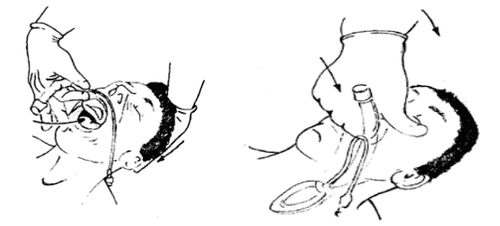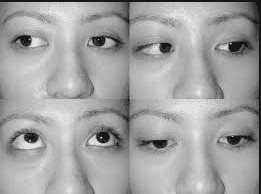This is an automatically translated article.
The article was professionally consulted by Specialist Doctor I Tran Thi Ngat - Department of General Surgery - Vinmec Da Nang International General Hospital. Dr. Ngat has more than 15 years of experience as an Anesthesiologist.Nasopharyngeal fibroids are a benign tumor, but if not treated early, the tumor is capable of spreading very widely, destroying bone and seriously impairing the patient's health. Early endoscopic resection of nasopharyngeal fibroids reduces the risk of dangerous complications for the patient.
1. Nasopharyngeal fibroids
Nasopharyngeal fibroma is a benign tumor arising in the posterior nasopharynx and nasopharynx. This disease is common in teenage boys.Nasopharyngeal fibroid is only a benign tumor, but it has the ability to spread very widely and destroy strong bone, it can spread into the intracranial cavity, endangering the patient's life if not detected and treated. timely treatment.
Nasopharyngeal fibroid tumor has the nature of proliferating blood vessels and fibrous tissue surrounding the blood pools, so during surgery will cause a lot of bleeding. Tumor adheres to the skull base in the nasopharyngeal region and splenic into surrounding structures, has many firmly attached legs, has many lobes, and many stalks. This makes it difficult to surgically remove the tumor.
In the past, patients with nasopharyngeal fibroids were often described with terrible faces such as eyeballs protruding out of their sockets, noses widening, and cheeks puffy like pebbles.
Today we no longer see such severe manifestations because the disease was detected and treated earlier. Patients often go to the doctor because of the bright red nosebleed in waves, at first it still stops on its own, later it bleeds more and more difficult to stop.
The principle of treatment of nasopharyngeal fibroids is preoperative embolism, surgical removal of the tumor, before surgery, it is necessary to estimate the amount of blood loss before and during surgery to prepare blood for transfusion.
Surgery is the mainstay of treatment for nasopharyngeal fibroids. If the patient is detected early, endoscopic surgery can be used to remove the tumor through the natural passage of the nasal cavity. This method has the advantage that it does not leave scars on the patient's face.
In case the tumor is too big to be operated on, the patient will be treated with radiation combined with hormones to help shrink the tumor.

2. Anesthesia mask larynx endoscopic surgery to cut nasopharyngeal fibroids
Endoscopic resection of nasopharyngeal fibroids is a method of using endoscopes and surgical instruments to dissect and remove tumors through the nasal cavity. A successful surgery depends on many factors, including anesthesia. Currently, there are many different anesthetic methods, one of which is laryngeal mask anesthesia.Laryngeal mask anesthesia is a technique of general anesthesia with a laryngeal mask placed for the purpose of breathing control during surgery. This method of anesthesia is contraindicated in the following cases:
Stomach full. Patients with maxillofacial lesions complicated by trauma or infection. The surgical facility does not have enough anesthesia and resuscitation facilities. The basic steps in laryngopharyngeal mask anesthesia for endoscopic surgery to remove nasopharyngeal tumors include:
Checking records, examining patients Position of patient in supine position, breathing 100% oxygen at a rate of 3 - 6l /min or breathe CPAP at least 5 minutes before induction of anesthesia until the oxygen concentration in the exhaled air reaches at least 90%. Install the monitor, set up the transmission line. Pre-anesthesia if necessary. Induction of anesthesia: Sleeping pills: intravenous anesthetics, volatile anesthetics. Painkillers Muscle relaxants The condition for placing a laryngeal mask is that the patient sleeps deeply enough, has enough muscle relaxation, and relieves pain. The technique of placing a laryngeal mask is as follows: The patient's head is in an intermediate position or slightly supine. With one hand open the patient's mouth, the other hand put the laryngeal mask through the dental arches, to the base of the tongue, put the back of the mask on the hard palate, push the mask to slide along the hard palate to enter the hypopharynx. When you feel resistance, stop and pump the cuff. Check the tightness and position of the laryngeal mask. Permanent. Maintain anesthesia. Control breathing, monitor patient's vital signs.

Reflux of gastric juice into the airway. In this case, it is necessary to aspirate the fluid immediately, place the patient in a low lying position, and tilt the head to one side. Need to monitor, prevent lung infection later. Hemodynamic disorders: hypotension or hypertension, cardiac arrhythmias (tachycardia, bradycardia, arrhythmia). Treatment depends on symptoms and causes. Accidents caused by laryngeal mask placement: laryngeal mask could not be placed. Vocal-tracheal-bronchospasm Injuries when putting on a laryngeal mask: bleeding, tooth fracture, vocal cord injury, foreign object falling into the airway,. .. Respiratory complications: folding, slipping of the laryngeal mask, opening of the respiratory system, lack of oxygen, lack of oxygen, .... In this case, it is necessary to ensure immediate ventilation and provide 100% oxygen to the patient. patient, then find the cause and solve. Complications after removing the laryngeal mask such as respiratory failure, sore throat, hoarseness, laryngospasm - gas - bronchi, inflammation of the upper respiratory tract,... Depending on the complication, the doctor will have a treatment method. appropriate to remedy such complications.
Vinmec International General Hospital is one of the hospitals that strictly applies safe surgical anesthesia practice standards according to international guidelines. Vinmec has a team of experienced anesthesiologists and nurses, modern equipment such as: nerve detectors, ultrasound machines, Karl Storz difficult airway control system, comprehensive anesthesia monitoring system GE's AoA (Adequate of Anesthesia) including monitoring of anesthesia, pain and muscle relaxation will provide high quality and safety, helping patients to have adequate anesthesia, not awake, no residual muscle relaxant after surgery.
Vinmec Health System is also proud to be the first hospital in Vietnam to sign with the World Anesthesiology Association (WFSA) towards the goal of becoming the safest hospital for surgical anesthesia in Southeast Asia.
Please dial HOTLINE for more information or register for an appointment HERE. Download MyVinmec app to make appointments faster and to manage your bookings easily.














